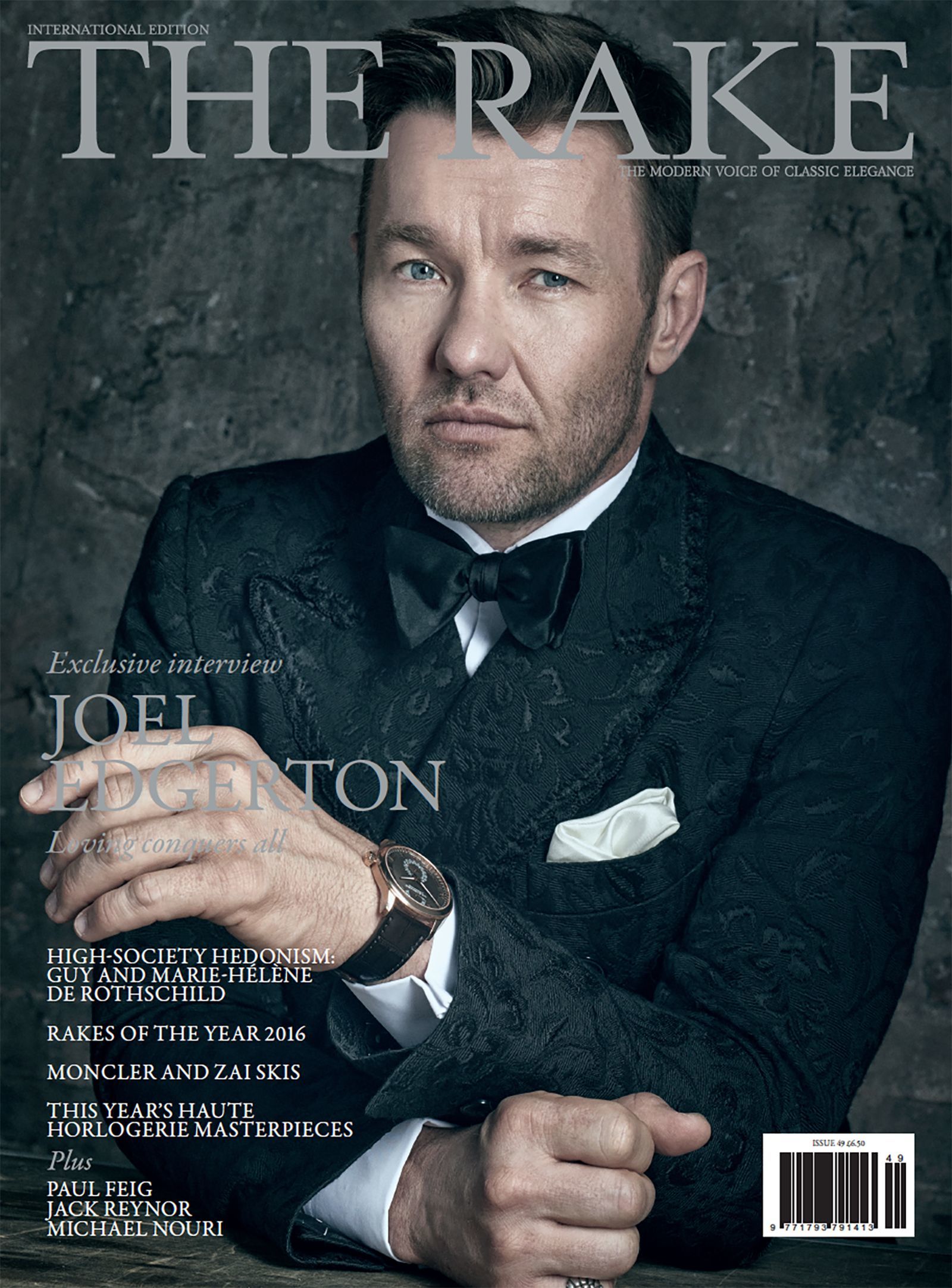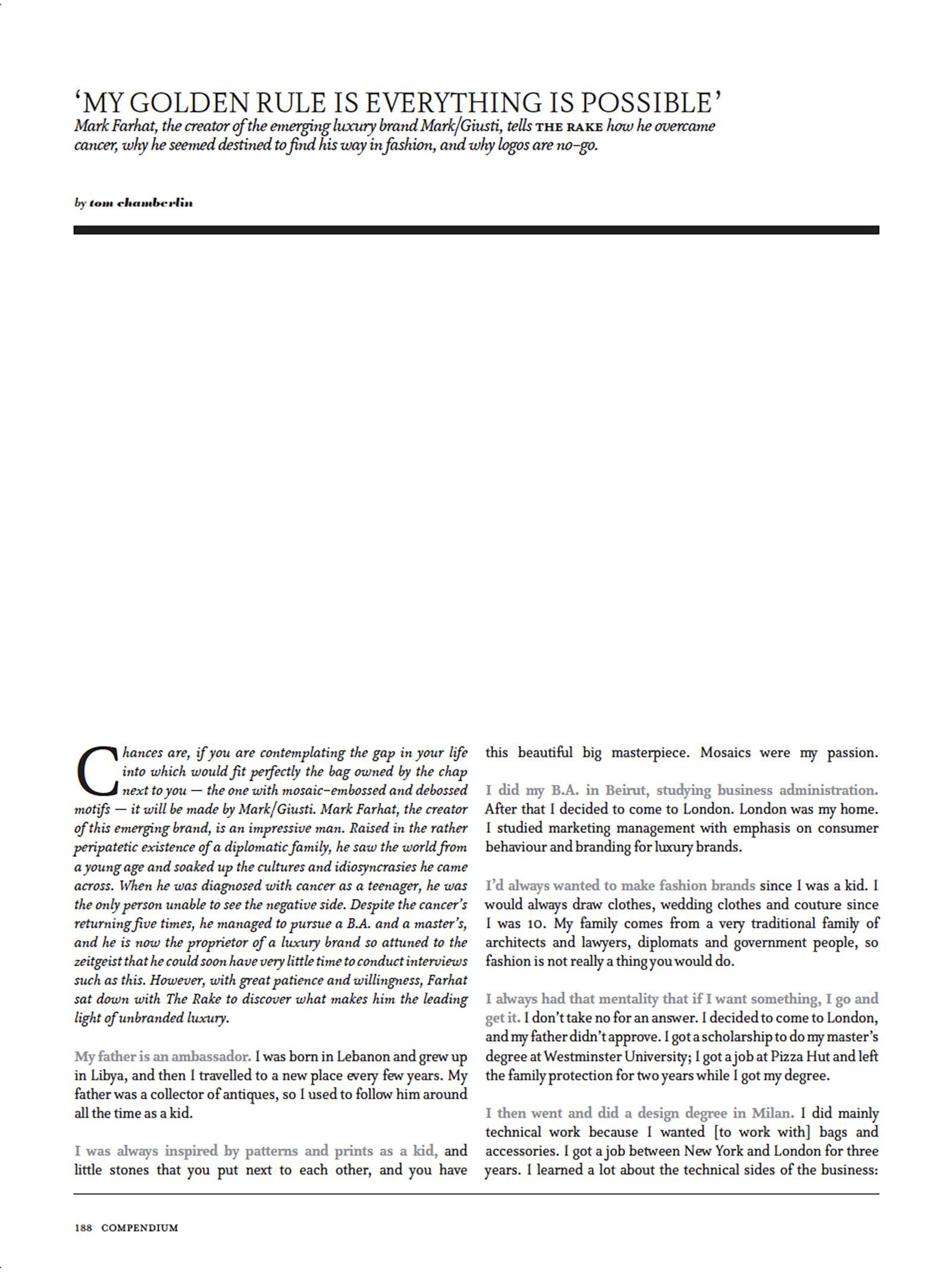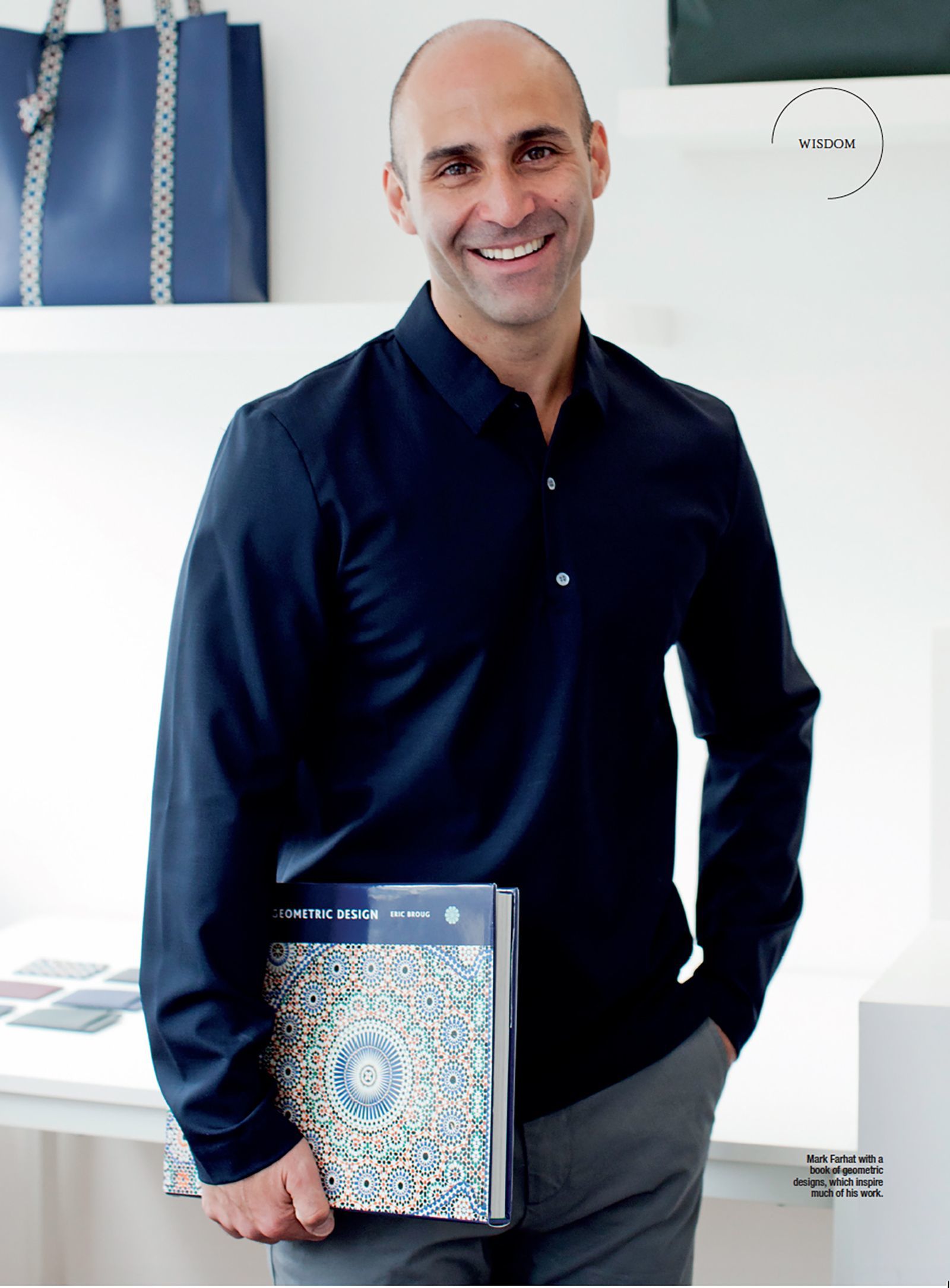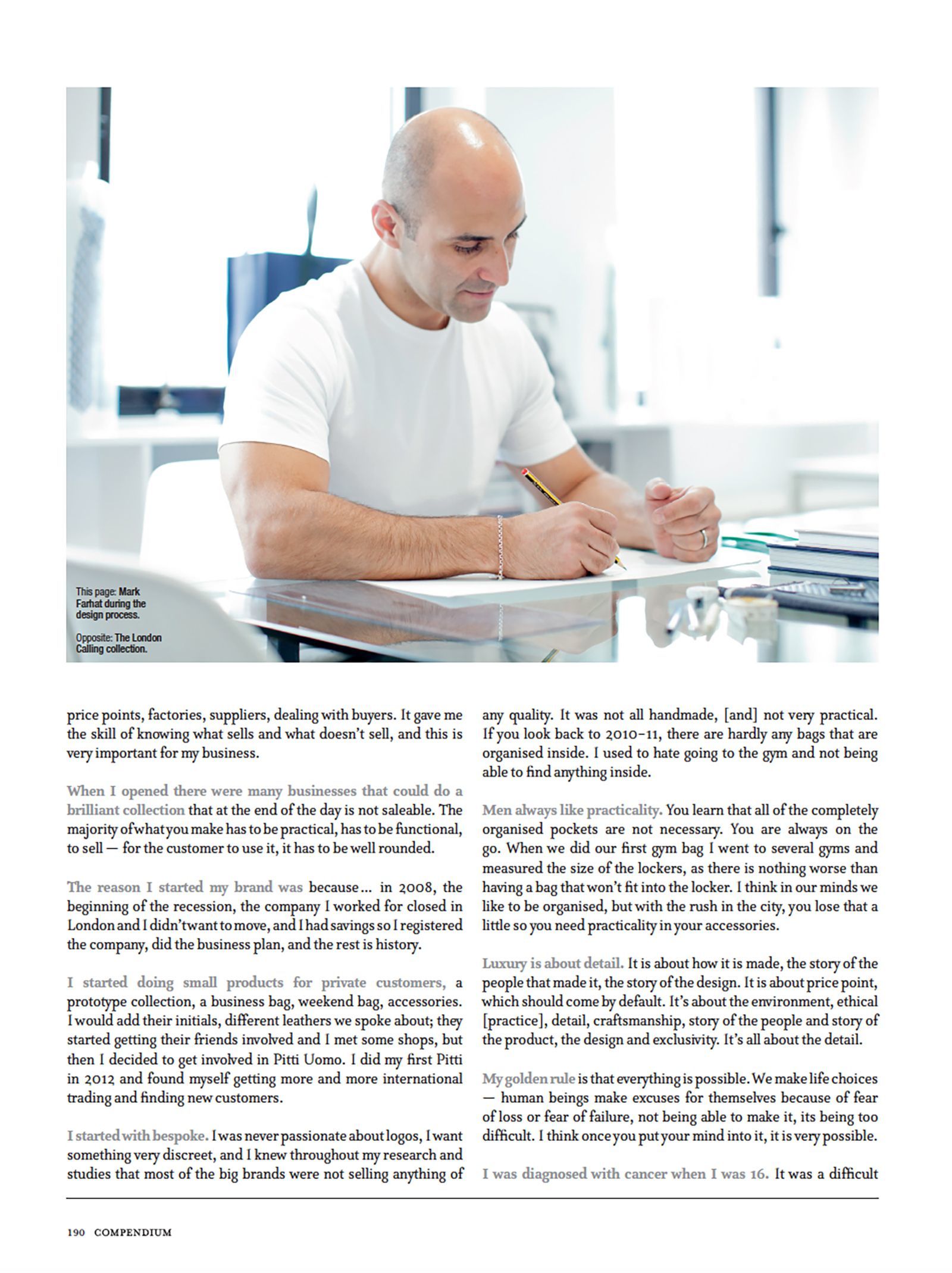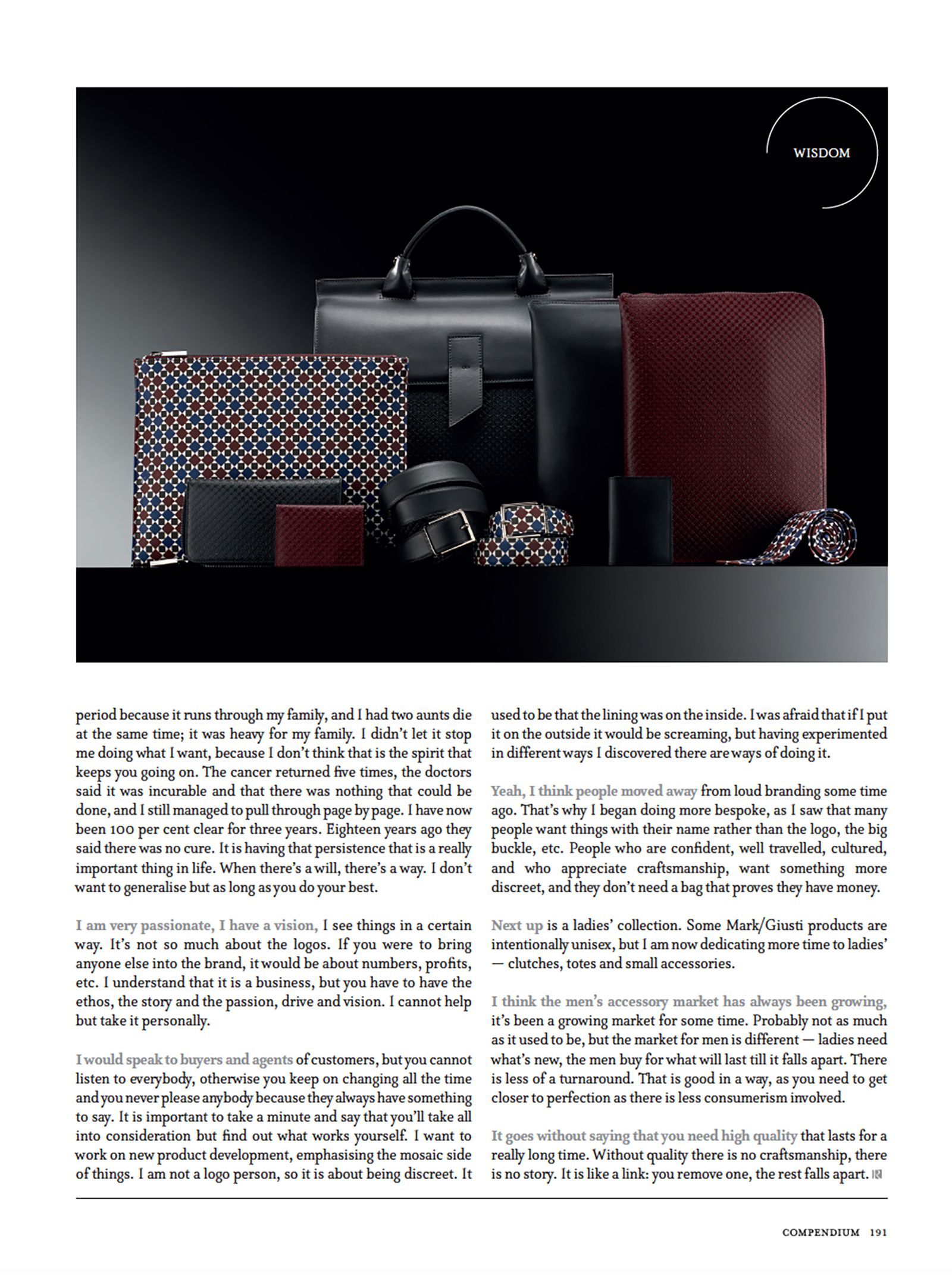Interview with The Rake Magazine
13th February 2017
In 2012 I came across The Rake Magazine in the Rizzoli Bookstore in Milan. I immediately picked it up and shortly after a flipped a couple of pages, I knew that this was a magazine I identified with - modern, witty, bespoke, beautiful writing and visually exceptional. Four years later, I was honoured to start a collaboration between the MARK/GIUSTI luxury brand and The Rake Magazine - the world's leading luxury men's style and lifestyle magazine for men with elegant taste. MARK/GIUSTI specialises in creating luxury leather bags, leather goods and handmade accessories.
In December 2016 I was interviewed by David Chamberlin, the Editor of the The Rake Magazine UK and this was one of the highlights of my career – to be able to share my experience with MARK/GIUSTI to a very mutually discerning and a very rakish audience.
Our collaboration does not end here and will include many projects which will be announced In due course.
You can read the full interview here:
“ Chances are, if you are contemplating the gap in your life into which would fit perfectly the bag owned by the chap next to you — the one with mosaic-embossed and debossed motifs — it will be made by Mark/Giusti. Mark Farhat, the creator of this emerging brand, is an impressive man. Raised in the rather peripatetic existence of a diplomatic family, he saw the world from a young age and soaked up the cultures and idiosyncrasies he came across. When he was diagnosed with cancer as a teenager, he was the only person unable to see the negative side. Despite the cancer’s returning five times, he managed to pursue a B.A. and a master’s, and he is now the proprietor of a luxury brand so attuned to the zeitgeist that he could soon have very little time to conduct interviews such as this. However, with great patience and willingness, Farhat at down with The Rake to discover what makes him the leading light of unbranded luxury.
My father is an ambassador. I was born in Lebanon and grew up in Libya, and then I travelled to a new place every few years. My father was a collector of antiques, so I used to follow him around all the time as a kid.
I was always inspired by patterns and prints as a kid, and little stones that you put next to each other, and you have this beautiful big masterpiece. Mosaics were my passion.
I did my B.A. in Beirut, studying business administration. After that I decided to come to London. London was my home. I studied marketing management with emphasis on consumer behaviour and branding for luxury brands.
I’d always wanted to make fashion brands since I was a kid. I would always draw clothes, wedding clothes and couture since I was 10. My family comes from a very traditional family of architects and lawyers, diplomats and government people, so fashion is not really a thing you would do.
I always had that mentality that if I want something, I go and get it. I don’t take no for an answer. I decided to come to London, and my father didn’t approve. I got a scholarship to do my master’s degree at Westminster University; I got a job at Pizza Hut and left the family protection for two years while I got my degree.
I then went and did a design degree in Milan. I did mainly technical work because I wanted [to work with] bags and accessories. I got a job between New York and London for three years. I learned a lot about the technical sides of the business: price points, factories, suppliers, dealing with buyers. It gave me the skill of knowing what sells and what doesn’t sell, and this is very important for my business.
When I opened there were many businesses that could do axbrilliant collection that at the end of the day is not saleable. The majority of what you make has to be practical, has to be functional, to sell — for the customer to use it, it has to be well rounded.
The reason I started my brand was because… in 2008, the beginning of the recession, the company I worked for closed in London and I didn’t want to move, and I had savings so I registered the company, did the business plan, and the rest is history.
I started doing small products for private customers, a prototype collection, a business bag, weekend bag, accessories. I would add their initials, different leathers we spoke about; they started getting their friends involved and I met some shops, but then I decided to get involved in Pitti Uomo. I did my first Pitti in 2012 and found myself getting more and more international trading and finding new customers.
I started with bespoke. I was never passionate about logos, I want something very discreet, and I knew throughout my research and studies that most of the big brands were not selling anything of any quality. It was not all handmade, [and] not very practical. If you look back to 2010-11, there are hardly any bags that are organised inside. I used to hate going to the gym and not being able to find anything inside.
Men always like practicality. You learn that all of the completely organised pockets are not necessary. You are always on the go. When we did our first gym bag I went to several gyms and measured the size of the lockers, as there is nothing worse than having a bag that won’t fit into the locker. I think in our minds we like to be organised, but with the rush in the city, you lose that a little so you need practicality in your accessories.
Luxury is about detail. It is about how it is made, the story of the people that made it, the story of the design. It is about price point, which should come by default. It’s about the environment, ethical [practice], detail, craftsmanship, story of the people and story of the product, the design and exclusivity. It’s all about the detail.
My golden rule is that everything is possible. We make life choices — human beings make excuses for themselves because of fear of loss or fear of failure, not being able to make it, its being too difficult. I think once you put your mind into it, it is very possible.
I was diagnosed with cancer when I was 16. It was a difficult 190 191 period because it runs through my family, and I had two aunts die at the same time; it was heavy for my family. I didn’t let it stop me doing what I want, because I don’t think that is the spirit that keeps you going on. The cancer returned five times, the doctors aid it was incurable and that there was nothing that could be done, and I still managed to pull through page by page. I have now
been 100 per cent clear for three years. Eighteen years ago they said there was no cure. It is having that persistence that is a really important thing in life. When there’s a will, there’s a way. I don’t want to generalise but as long as you do your best.
I am very passionate, I have a vision, I see things in a certain way. It’s not so much about the logos. If you were to bring anyone else into the brand, it would be about numbers, profits, etc. I understand that it is a business, but you have to have the ethos, the story and the passion, drive and vision. I cannot help but take it personally.
I would speak to buyers and agents of customers, but you cannot listen to everybody, otherwise you keep on changing all the time and you never please anybody because they always have something to say. It is important to take a minute and say that you’ll take all
into consideration but find out what works yourself. I want to work on new product development, emphasising the mosaic side of things. I am not a logo person, so it is about being discreet. It used to be that the lining was on the inside. I was afraid that if I putit on the outside it would be screaming, but having experimented in different ways I discovered there are ways of doing it.
Yeah, I think people moved away from loud branding some time ago. That’s why I began doing more bespoke, as I saw that many people want things with their name rather than the logo, the big buckle, etc. People who are confident, well travelled, cultured, 'and who appreciate craftsmanship, want something more discreet, and they don’t need a bag that proves they have money.
Next up is a ladies’ collection. Some Mark/Giusti products are intentionally unisex, but I am now dedicating more time to ladies’ — clutches, totes and small accessories.
I think the men’s accessory market has always been growing, it’s been a growing market for some time. Probably not as much as it used to be, but the market for men is different — ladies need what’s new, the men buy for what will last till it falls apart. There is less of a turnaround. That is good in a way, as you need to get closer to perfection as there is less consumerism involved.
It goes without saying that you need high quality that lasts for a really long time. Without quality, there is no craftsmanship, there is no story. It is like a link: you remove one, the rest falls apart.”
By Tom Chamberline - Editor of The Rake Magazine
In December 2016 I was interviewed by David Chamberlin, the Editor of the The Rake Magazine UK and this was one of the highlights of my career – to be able to share my experience with MARK/GIUSTI to a very mutually discerning and a very rakish audience.
Our collaboration does not end here and will include many projects which will be announced In due course.
You can read the full interview here:
“ Chances are, if you are contemplating the gap in your life into which would fit perfectly the bag owned by the chap next to you — the one with mosaic-embossed and debossed motifs — it will be made by Mark/Giusti. Mark Farhat, the creator of this emerging brand, is an impressive man. Raised in the rather peripatetic existence of a diplomatic family, he saw the world from a young age and soaked up the cultures and idiosyncrasies he came across. When he was diagnosed with cancer as a teenager, he was the only person unable to see the negative side. Despite the cancer’s returning five times, he managed to pursue a B.A. and a master’s, and he is now the proprietor of a luxury brand so attuned to the zeitgeist that he could soon have very little time to conduct interviews such as this. However, with great patience and willingness, Farhat at down with The Rake to discover what makes him the leading light of unbranded luxury.
My father is an ambassador. I was born in Lebanon and grew up in Libya, and then I travelled to a new place every few years. My father was a collector of antiques, so I used to follow him around all the time as a kid.
I was always inspired by patterns and prints as a kid, and little stones that you put next to each other, and you have this beautiful big masterpiece. Mosaics were my passion.
I did my B.A. in Beirut, studying business administration. After that I decided to come to London. London was my home. I studied marketing management with emphasis on consumer behaviour and branding for luxury brands.
I’d always wanted to make fashion brands since I was a kid. I would always draw clothes, wedding clothes and couture since I was 10. My family comes from a very traditional family of architects and lawyers, diplomats and government people, so fashion is not really a thing you would do.
I always had that mentality that if I want something, I go and get it. I don’t take no for an answer. I decided to come to London, and my father didn’t approve. I got a scholarship to do my master’s degree at Westminster University; I got a job at Pizza Hut and left the family protection for two years while I got my degree.
I then went and did a design degree in Milan. I did mainly technical work because I wanted [to work with] bags and accessories. I got a job between New York and London for three years. I learned a lot about the technical sides of the business: price points, factories, suppliers, dealing with buyers. It gave me the skill of knowing what sells and what doesn’t sell, and this is very important for my business.
When I opened there were many businesses that could do axbrilliant collection that at the end of the day is not saleable. The majority of what you make has to be practical, has to be functional, to sell — for the customer to use it, it has to be well rounded.
The reason I started my brand was because… in 2008, the beginning of the recession, the company I worked for closed in London and I didn’t want to move, and I had savings so I registered the company, did the business plan, and the rest is history.
I started doing small products for private customers, a prototype collection, a business bag, weekend bag, accessories. I would add their initials, different leathers we spoke about; they started getting their friends involved and I met some shops, but then I decided to get involved in Pitti Uomo. I did my first Pitti in 2012 and found myself getting more and more international trading and finding new customers.
I started with bespoke. I was never passionate about logos, I want something very discreet, and I knew throughout my research and studies that most of the big brands were not selling anything of any quality. It was not all handmade, [and] not very practical. If you look back to 2010-11, there are hardly any bags that are organised inside. I used to hate going to the gym and not being able to find anything inside.
Men always like practicality. You learn that all of the completely organised pockets are not necessary. You are always on the go. When we did our first gym bag I went to several gyms and measured the size of the lockers, as there is nothing worse than having a bag that won’t fit into the locker. I think in our minds we like to be organised, but with the rush in the city, you lose that a little so you need practicality in your accessories.
Luxury is about detail. It is about how it is made, the story of the people that made it, the story of the design. It is about price point, which should come by default. It’s about the environment, ethical [practice], detail, craftsmanship, story of the people and story of the product, the design and exclusivity. It’s all about the detail.
My golden rule is that everything is possible. We make life choices — human beings make excuses for themselves because of fear of loss or fear of failure, not being able to make it, its being too difficult. I think once you put your mind into it, it is very possible.
I was diagnosed with cancer when I was 16. It was a difficult 190 191 period because it runs through my family, and I had two aunts die at the same time; it was heavy for my family. I didn’t let it stop me doing what I want, because I don’t think that is the spirit that keeps you going on. The cancer returned five times, the doctors aid it was incurable and that there was nothing that could be done, and I still managed to pull through page by page. I have now
been 100 per cent clear for three years. Eighteen years ago they said there was no cure. It is having that persistence that is a really important thing in life. When there’s a will, there’s a way. I don’t want to generalise but as long as you do your best.
I am very passionate, I have a vision, I see things in a certain way. It’s not so much about the logos. If you were to bring anyone else into the brand, it would be about numbers, profits, etc. I understand that it is a business, but you have to have the ethos, the story and the passion, drive and vision. I cannot help but take it personally.
I would speak to buyers and agents of customers, but you cannot listen to everybody, otherwise you keep on changing all the time and you never please anybody because they always have something to say. It is important to take a minute and say that you’ll take all
into consideration but find out what works yourself. I want to work on new product development, emphasising the mosaic side of things. I am not a logo person, so it is about being discreet. It used to be that the lining was on the inside. I was afraid that if I putit on the outside it would be screaming, but having experimented in different ways I discovered there are ways of doing it.
Yeah, I think people moved away from loud branding some time ago. That’s why I began doing more bespoke, as I saw that many people want things with their name rather than the logo, the big buckle, etc. People who are confident, well travelled, cultured, 'and who appreciate craftsmanship, want something more discreet, and they don’t need a bag that proves they have money.
Next up is a ladies’ collection. Some Mark/Giusti products are intentionally unisex, but I am now dedicating more time to ladies’ — clutches, totes and small accessories.
I think the men’s accessory market has always been growing, it’s been a growing market for some time. Probably not as much as it used to be, but the market for men is different — ladies need what’s new, the men buy for what will last till it falls apart. There is less of a turnaround. That is good in a way, as you need to get closer to perfection as there is less consumerism involved.
It goes without saying that you need high quality that lasts for a really long time. Without quality, there is no craftsmanship, there is no story. It is like a link: you remove one, the rest falls apart.”
By Tom Chamberline - Editor of The Rake Magazine
